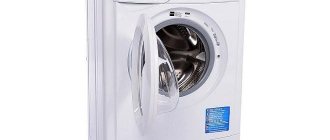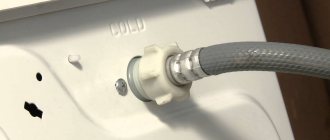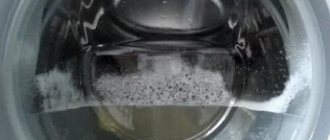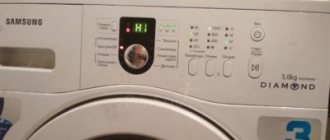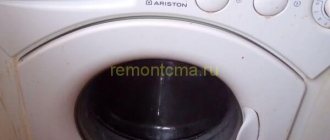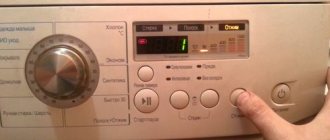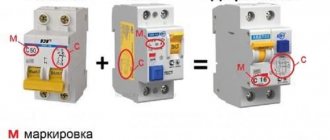Troubleshooting
After turning off the machine and de-energizing it, disconnecting it from the water supply, we perform an external inspection to determine why the water is leaking. To carry out this inspection, you may need to tilt the washing machine or remove the back or side covers of the machine. It will be much easier to find the faulty part if you have determined at what cycle of operation the leak began to appear.
Hose damage
Damage to hoses, their premature wear and poor connection at the joints is the most common reason why a machine may leak.
Inlet hose leak
A leak in the inlet hose can be detected even when the machine is not running. If you have established for sure that there is a defect in the inlet hose, then it is not advisable to repair it, since the water pressure supplied to the washing machine system is quite high. If necessary, this hose must be replaced with a new one. And if the seal is broken at the junction of the hose with the machine components, it is necessary to change the gasket and tighten it well. In order not to break the plastic elements of the hose, you need to clamp it exclusively with your hands without using additional tools.
The drain hose may be leaking
Leaking pipe
If there is a leak during water intake, which disappears after filling the tank, the most likely cause may be damage to the pipe connecting the fill valve to the powder receiver hopper. To carry out an external inspection of this unit, you will need to remove the cover from the Samsung washing machine.
Damage to the drain pipe can also cause water to leak from below. This pipe connects the tank to the drain pump. To examine it, you need to look from below, after tilting the washing machine.
poor connection between the pipe and the tank
Damage to the drain pump
If, during washing, you find water leaking in the area of the drain pump from below, then perhaps it has become unusable or damaged. To carry out a high-quality visual inspection of this unit, it must be completely dismantled. A faulty drain pump must be replaced, so professional assistance may be required.
The cuff is leaking
When washing laundry, in which careless owners sometimes forget some small items in their pockets, the sealing collar of the washing machine door may be damaged. Such damage is clearly visible in machines with horizontal loading of laundry.
If the damage is not very large, then it can be repaired using a rubber patch and special waterproof glue. After sealing the hole, it is better to turn the cuff over with the patch facing up, since with this arrangement the water load on it will be less, which can increase its service life. If the seal is damaged internally, it must be removed from the unit.
Of course, it is advisable to replace the defective cuff with a new one.
Damage to the washing machine tank
To inspect the tub of a top-loading washing machine, you will need to tilt it to check the bottom for water droplets from below. It is good to use a hand-held flashlight. If the washing machine is top-loading, you will have to remove the side wall. Tank failure may occur due to the presence of foreign solid objects or a malfunction of the heating element.
If the tank consists of two halves, then the leak may occur due to the drying out of the sealing gasket between them. Such a malfunction is extremely rare and requires replacement of the gasket.
Oil seal malfunction
As a rule, a malfunction of the oil seal during washing is difficult to determine; it becomes noticeable when the machine is operating in spin mode. If you notice that the tank seal is leaking, you must immediately stop operating the machine to avoid more serious damage to the unit.
Repairing such a malfunction involves replacing the worn oil seal or bearing with new parts. Such work requires the involvement of washing machine repair professionals from the workshop.
Leakage through the dispenser
Water may leak during washing if the dispenser hopper is clogged with powder residue or a foreign object. To eliminate the cause of the leak, you need to remove the dispenser and clean it and the hopper from obstructive contaminants.
Leakage through the dispenser is also possible due to excessive water pressure in the system and due to problems with the inlet valve. This problem can be eliminated by reducing the water pressure.
What is the filter for?
Few users ask this question, but the answer is quite simple: a filter in a washing machine is necessary to ensure that the water passing inside the equipment is sufficiently purified. The filter removes scale from water, softens it, and prevents the ingress of foreign objects.
Modern cars (LG and others) have several filters installed at once:
- drain Responsible for the water that drains into the sewer and, along with this water, small buttons, threads, wool from clothes and other debris come out;
- aspic. This filter is located in the valve that supplies water and it is to this filter that the inlet hose is connected;
- network. Responsible for the electricity that flows to the washing machine, saving it from overheating and current surges.
How to find a fault?
The first thing you need to do when starting to look for the cause of water leakage is to turn off the power to the washing machine. Check if the water drain filter is clogged. Perhaps the reason is that it is not closed well, so water leaks out. Typically, the drain filter is located at the bottom of the machine body, under the front strip. Manufacturers often build it under a special cover that opens easily. If there is no such cover, you will have to completely unscrew the bottom plastic panel.
You can then inspect the drain hose and where it connects to the machine's drain pump. For most well-known brands of washing machines (LG, Samsung, Indesit, Ariston, Whirpool, Candy, Beko, Ardo), you can get to the hose connection through the bottom of the machine. Just lay it on its side and see how tightly and tightly the hose is screwed to the pump.
In cars under the Electrolux and Zanussi brands, to check the connection location, you will have to remove the back cover of the case. The connection between the drain hose and the drain pump in machines under the Bosch and Siemens brands is difficult to access. You will have to disassemble the front of the machine, first removing the powder tray and cuff.
Having ruled out the drain hose as the cause of the washing machine leaking from below during the spin cycle, we move on to inspecting the seals and bearings. When the seals wear out, water drips appear on the back of the machine drum. To see all this you will have to remove the back cover of the case. As for the bearings, their failure is accompanied by a grinding noise during drum rotation.
If the above reasons were excluded during the inspection, one thing remains - the drain pump is broken. However, we remind you that only a specialist can accurately diagnose the reasons why water flows from the machine during the spin cycle.
Corrective Actions
The most solvable problem is a malfunction of the drain filter. If the filter is clean, but it cannot be tightened tightly because the thread is broken, then it needs to be replaced. Buy a similar filter in the store and install it in place.
With simple plumbing skills, you can replace the drain hose yourself if the cause of water leakage is in it. We described above how to get to the place where the hose is connected to the machine, then you need to:
- pull out the drain hose from the sewer outlet;
- using a screwdriver, loosen the clamp securing the hose to the pump;
- remove the drain hose from the drain pump;
- remove all fasteners securing the hose;
- take a new hose and connect it to the pump and then to the drain pipe outlet.
You can read the entire process in detail for different brands of washing machines in the article about replacing the drain hose.
If you need to replace seals or bearings in a washing machine, you need to almost completely disassemble the machine itself, because you won’t be able to get to them otherwise. Few people decide to undertake such home repair work. For those who nevertheless set the goal of eliminating such a malfunction on their own, our website has an article “How to replace the tank seal?”
In addition, you can watch a video recording that will help you repair your car, as well as evaluate the complexity of such repairs.
If the reason that the washing machine leaks during the spin cycle turns out to be a broken drain pump, then in this case you will also have to do serious work, not to mention the cost of purchasing a new similar part.
In conclusion, we note that if water flows from the washing machine during the spin process, this may indicate a serious malfunction. So the malfunction makes itself felt precisely during the spin process, when the machine is running at full power, at high speeds. Whatever the problem, it must be solved as soon as possible, otherwise it will lead to the most unfavorable consequences.
Hoses are leaking
Drain and inlet hoses for water often leak in areas where they connect to the unit. To get rid of such a breakdown, you need to unscrew the hose for filling or draining water and change the rubber gasket.
But it also happens that the hose has worn out or was accidentally damaged, then to restore its integrity you can use special glue and a rubber patch, although a more reliable option would be to replace it with a new one. But all these recommendations apply to the drain hose. If the inlet hose has been damaged, we do not recommend repairing it with a patch, since the water pressure in it can be very high, and then replacement becomes the best option. You can buy an inlet hose at any plumbing store, and inexpensively.
Leakage when rinsing
There are few situations when the washing machine leaks already at the stage of rinsing clothes, but if you find this problem, call a specialist, because you won’t be able to eliminate the causes on your own. Here they are:
- Bearing wear. This is a serious malfunction because the bearings are responsible for the mobility of the drum. If they have worn out, lost their properties and even caused a leak, you will definitely need professional help. To find out if there really is a problem with them, turn the tank with your hands in the off position. If you hear creaking, knocking and other extraneous noises, and the drum itself is tight, the bearings need to be replaced. Such repairs are not easy; you have to open the systems, and sometimes cut the tank. Samsung equipment is quite easy to disassemble.
- The cuff is leaking. If the seal has damage at the bottom, it is difficult to notice them, because there are many folds in this part, and it leaks from under the body. Check the integrity of the cuff regularly.
Whatever the reason that leads to leaks, they cannot be ignored; it is better to contact the trusted Remontano service by phone.
The tank filler pipe is leaking
It is likely that the reason why water began to flow from the water supply hose is that the connection of the pipe to the machine’s tank has become loose. To find out if this is the case, you need to carefully examine the tank. If you see traces of water leaks, then the problem has been found.
To repair or replace the inlet hose of a washing machine, you need to remove the pipe, then clean all areas of the connections from the remaining glue and dry them. Then you can fix the pipe again, to fix which you will need epoxy resin or high-quality moisture-resistant glue.
Leakage when washing
It can be difficult to notice that the device is leaking during operation, because at first the traces may be minimal, they can easily be attributed to the proximity of the sink or laundry from the last time. But if water flows in the washing machine precisely during the washing cycle, that is, longer than during filling or rinsing, the situation will very quickly worsen and can damage the internal elements of the device, it may be impossible to restore them
Therefore, pay attention to even small puddles under the device during operation and check the most vulnerable components:
- Drum. After use, check the drum for integrity, the presence of holes and try to protect it from sharp zippers, buttons, snaps, etc. Because if the tank leaks, replacing it, especially in the expensive brands Zanussi, Miele and AEG, can cost up to 50% of the price of a new car.
- Upper part of the seal. The rubber gasket creates a tight seal inside the tank and protects against leaks. When using aggressive powders or acids for cleaning, the sealing lip may become leaky. Even if the hole is at the top, moisture will still leak out in the gentle wash mode. If you find damage, immediately call a technician for a replacement, and when you call, tell the make and model of the device so that the specialist can immediately take the necessary spare part with him.
- Drain filter. Each user should check the filter regularly for debris. But if you have not tightened the plug tightly or it is damaged, there will be leakage from this hole. If a puddle has formed below and directly under the filter, first make sure it is screwed on tightly.
Where can I purchase the necessary parts?
When purchasing a new component, you must remember that there are a huge number of washing machines on the market and they are all different from each other. Even different Bosch models can have completely different parts. Therefore, in order to buy spare parts of the required shape and size, you should take this part with you or write down the name and number of the machine. Otherwise, the store consultant will not be able to help you with your choice.
That is why it is much more convenient to call a specialist, because a specialist will not only tell you what the problem is, but will also independently purchase and replace the faulty component, which will save a lot of time.
To summarize, it is worth noting that in order to ensure that a washing machine malfunction does not come as a surprise, and that neighbors do not suffer from a sudden flood, it is necessary to monitor the quality of water and detergents and replace faulty parts.
Causes of leakage
The modern household appliances market is rich in a variety of models of automatic washing machines. Even models from well-known manufacturers (Samsung, Indesit, LG, etc.) may have their own shortcomings and weak points that can leak during long-term operation of the equipment. A washing machine can leak for various reasons:
- Violation of the rules for operating a washing machine;
- Using the wrong brand of washing powder;
- Mechanical damage to the machine;
- Use of low-quality parts during repair and assembly of the unit;
- Manufacturing defects.
Inspection of the breakdown
If you find a stain on the floor near a running washing machine, try to avoid contact with water. Contact with operating equipment that is leaking water can result in electric shock, even death. Therefore, it is necessary, first of all, to turn off the power to the washing machine by disconnecting it from the power supply. If you cannot remove the plug from the socket, you must run to turn off the electricity in the entire room.
Then you must limit the flow of water into the machine. To do this, you need to turn off the water supply tap to the device or completely cut off the water supply to the system.
After these operations, you need to use a drain filter to remove the remaining water in the washing unit.
Then only you can begin an external inspection of this household device.
Damage to washing machine components leading to leakage
- Tank leakage;
- Leaking drain pump (pump);
- Violation of the tightness and integrity of the hoses;
- Damage to the door seal;
- Lack of tightness of the filler pipe connection;
- Wear of the tank seal;
- Presence of debris in the powder dispenser hopper;
- Damage to the tank drain pipe.
First steps: what needs to be done?
As soon as you notice that your washing machine is leaking, you need to immediately take measures to protect yourself and your apartment from unpleasant consequences. To get started, follow these steps:
- Unplug the machine, making sure not to step in a puddle to avoid electric shock. If you cannot reach the outlet from a dry area, turn off the electricity in the entire apartment (house).
- Shut off the water supply to the household appliance by closing the intake valve or completely turning off the water supply in the apartment.
- Drain the water from the washing machine tank using the emergency hose or drain filter (they are located below the loading hatch).
- Remove the laundry from the drum and begin inspecting the equipment.
After eliminating local flooding around the machine, do not forget to drain the water from the device itself
Most manufacturers of washing machines (LG, Beko, Samsung, Bosch, etc.) equip their equipment with a leakage protection system. What does it mean? If any of the components leaks, the Aquastop function blocks further water supply and its distribution to vital parts of the machine, for example, the control panel. This prevents flooding of the apartment and associated troubles.
Before repairing the unit, you need to disconnect it from the network and drain the water from the tank. Remember, it is important to follow safety precautions so as not to endanger life and health.
Prevention
When the washing machine leaks during the spin cycle, it’s too late to think about prevention. Factory defects are not always the cause of trouble (often we ourselves are to blame). If you take good care of your property, your appliances will last for many years.
Follow these guidelines:
- When loading vertically, the drum doors must fit snugly against the body (check this before closing the lid);
- clean the drain filter every four months;
- clean the heating element (lime deposits accumulate there, so inspect the part every 2-3 months);
- place bras in special bags (this will protect the drum from mechanical damage);
- between washing sessions, turn off the unit (this will protect against breakdowns due to power surges);
- install the machine in the kitchen (the humidity level is lower there);
- poison rodents and cockroaches (their feces clog filters and hoses, which leads to damage to the mechanism);
- avoid overload (the recommended limit in kilograms is specified in the instructions);
- equip the system with a water softener filter.
To prevent leaks, clean your washing machine filter regularly.
Let us add that you should only use powders for vending machines, and pumping hot water into the drum is strictly prohibited. The water from the boiler room is saturated with drugs that can harm equipment. You should also not wash car mats, shoes and feather pillows in the tank - this is a recipe for mechanical damage to the tank. Operate the device wisely - this way you will extend the life of the device by 1.5-2 years.
Share Like Share Tweet Pin
For what reasons do leaks occur?
When the garbage filter leaks, water pours out from under the washing machine. However, before solving the problem, you need to make sure that the drain filter is leaking. After all, any part can leak: a pipe, a tank, a drain pump. Wipe the suspected leak with a dry towel or napkin and see if the filter gets wet over time. If yes, let's move on.
What is the SM cleaning element? It resembles a cork and is inserted into the snail of the washing machine. The snail, in turn, is connected to a channel for discharging water used during washing and a channel for pumping out water. Thus, if the filter is not sealed, water after washing will come out of the tank and spill from below. There are usually two reasons why the filter leaks.
- Incorrectly screwed in plug. If the filter is not put in place correctly, there is a high chance that there will be a gap through which water will leak. The same thing can happen if the plug is screwed in loosely.
- The rubber seals are worn out. They are located at the edges of the snail and on the filter itself. They just prevent water from seeping through the cracks. Over time, rubber tends to dry out and wear out, which leads to seal failure and leaks.
Now, knowing the reasons, you can deal with the consequences. Keep in mind that a leak may occur as a result of something completely unpredictable, in which case you will have to contact a specialist. We will consider the algorithm of actions in a standard situation.
Causes of leakage
To recognize the real causes of a leak, you need to carefully examine all possible problem areas. Diagnostics are performed after disconnecting the device from the network. It is also better to disconnect the hoses to free up space for moving the unit. There can be many reasons for a leak. Here's just a small part of them.
Incorrect operation
It leads to the fact that the washing machine does not work at full capacity, and blockages occur. If you follow all the recommendations for cleaning the filtration and drain systems, the risk of a leak will be minimal. A problem may arise if the hoses become mechanically damaged. Children and pets can become a source of danger.
If the leak is not under the body of the machine, but in front, you should pay attention to the condition of the cuff. They are the ones who most often suffer from mistreatment
Incorrect selection of chemicals
When, upon inspection of the washing machine, obvious traces of water leakage from the powder loading compartment are discovered, the cause may not only be a blockage. If too much detergent is added, or it has a higher foaming capacity than necessary, the excess foam will find its way out through the joints of the tray.
Manufacturing defects
Sometimes washing machines, even those produced by the most famous manufacturers, have a manufacturing defect if the cause of the leak is the failure of one of the system elements. Leaks are most often caused by the installation of low-quality seals and pipes - parts that are quite easily replaced under warranty.
Breakage of parts
As a rule, leaks are associated with the breakdown of parts only if we are talking about the drain system. In this case, a leak will occur during the spin or rinse stage, when water is discharged from the system. If the pump is faulty, water will accumulate at the back wall. A leak also forms there if the seals or drum bearings fail. A leak at the dispenser may be due to damage to the drain valve.
When water leaks through the cuff, you should definitely pay attention to the operation of the pressure switch. If this sensor, responsible for controlling the water level, fails, overflows will inevitably occur in the drum
Causes of failure and how to fix them
It is very important to detect operational problems in a timely manner and correct them. Otherwise, a filter failure in machines like Samsung can lead to the remaining chips burning out and unwanted objects entering the device.
So what should you do if a puddle forms on the floor during washing? It is not recommended to repair and inspect the washing machine yourself, but if circumstances do not allow you to call a technician, you can try the following:
- you need to open the hatch located at the bottom of the machine and unscrew the drain filter;
- blow it out and screw it back, it is important that the filter fits tightly enough. It is very important not to apply pressure, because this can break the thread!
A loose filter connection is the most common cause of leakage, however, if the above method does not fix the problem, you need to call a technician.
Other reasons for filter failure include:
- manufacturing defects. If the washing machine has been leaking from the very first day of use, most likely the problem is due to incorrect assembly of the device. This problem is extremely rare, especially if we talk about famous brands such as, for example, In the case of a manufacturing defect, you should contact the store and replace the purchased equipment with a working one;
- Like any other thing, the filter can wear out over time. Such a breakdown can be corrected by simply replacing the component;
- Not only the filter itself can wear out, but also special rubber bands that ensure a tight fit of the spare part to the machine. If this is the cause of the breakdown, then you just need to replace the rubber bands with new ones;
- Since the filter is designed to purify water, it can become clogged over time. In this case, you can purchase a new spare part or wash the old one.
Repair methods
Repair methods depend on the model of the washing machine, design features and the identified cause of the malfunction. In most situations, repairing individual components is sufficient to restore functionality.
Replacing the water supply hose
If a leak is observed at the junction with the tee in the water supply system or at the connection to the housing, it is enough to install a new gasket to fix the problem. If you find a leak on the hose itself, you will need to replace it. To do this, you need to select a hose of a similar size.
If the problem is in the filter
When the filter is malfunctioning and allows water to leak due to loose fittings, you can easily fix the problem yourself. You just need to tighten the fasteners using pliers.
Cleaning the dispenser from deposits
You can clean the detergent dispenser grid from plaque and accumulated dirt with a strong stream of water. To do this, the compartment is removed from the housing and thoroughly washed. If there is heavy dirt, you should use a cleaning agent.
Replacing the intake valve pipe
If there is a leak in the pipe that is responsible for letting water into the tank, you can do without replacing the part. When the damage is at the connection point of the pipe, you need to coat it from the inside with rubber glue and press the part tightly. It takes about 15-20 minutes for the adhesive to dry and restore the connection.
Repair of the pipe that is responsible for collecting fluid
If the pipe that supplies the fluid has loose clamps, you can fix the problem by tightening them. If a serious breakdown occurs, the component must be replaced.
To diagnose the condition of the pipe, you need to proceed according to the following scheme:
- Remove the lid of the washing machine and find the tube that connects the water intake valve to the powder compartment. The pipe is held in place by fasteners on both sides.
- Using pliers, loosen the clamps and move them to the central part of the pipe.
- Carefully remove the pipe from the valve and cuvette outlet.
- Inspect the part and check for blockages. If available, you can use a bottle brush.
Replacing the rubber cuff
Most modern washing machines are designed in such a way that replacing the sealing lip does not require disassembling the body. The cuff is secured with two clamps. To remove the outer clamp, you need to bend the elastic band and pry the clamp with a thin screwdriver, pulling the cuff towards you.
To disconnect the internal clamp, remove the front panel of the machine. The process of disassembling the panel depends on the specific type of washing machine. If you cannot disassemble the equipment yourself, you should entrust the work to specialists.
Replacing the drain pump
Most washing machine manufacturers install non-separable drain pumps, so repairing them is not possible. In addition, separate repair kits are not available for models with a dismountable pump. It is possible to fix a problem in the operation of the drain pump only in a situation where its parts are intact and the pump is simply clogged.
If the blockage is not cleared in time, this may cause overload of the pump motor or breakdown of the impeller. Having discovered the first signs of a malfunction, you need to carry out diagnostics and, if necessary, replace the part.
Tank replacement
In case of mechanical damage to the tank, it is possible to eliminate the leak only by replacing the element. The old tank must be removed and the new one installed through the top of the machine.
Replacing the oil seal
The process of replacing the oil seal is labor-intensive and requires a series of steps to be performed sequentially. In particular:
- remove the top panel, back and front walls of the machine;
- remove the counterweights and disconnect the shock-absorbing springs;
- disconnect electronic and mechanical control units, remembering the location of the wire for reassembly;
- remove the tank and separate its parts from each other to gain access to the bearings and oil seal.
Before replacing the oil seal, it is recommended to inspect the condition of the crosspiece and shaft. If the washing machine operated in emergency mode for a long time, defects could form on the elements, and then replacing the seal would not bring the desired effect.
Call the master
If you can’t figure out the leak in your LG machine on your own, you can contact a household appliance repair company. It is not difficult to find such companies on the Internet by indicating the name of your city in the search query.
To avoid falling for scammers and incompetent professionals, it is better to contact companies that have been operating on the market for a long time and have positive reviews.
The cost of the technician’s work will depend on the severity of the breakdown and the complexity of the repair. Payment for spare parts required is made separately.
The average price for work in Moscow is:
- replacement of the drain hose – from 1,500 rubles;
- eliminating drain blockage – from 1,400 rubles;
- replacement of detergent dispenser – from 1,200 rubles;
- cleaning the drain filter – from 1,300 rubles;
- pipe replacement – from 2,000 rubles;
- pump replacement/repair – 2,100 rubles;
- tank replacement – from 4,600 rubles, etc.
To invite a specialist, you should call the phone number listed on the company’s website or leave your contact details for communication. When applying you should indicate:
- type of malfunction;
- car make/model.
After the repair has been carried out, the machine is started without adding laundry. If the work is successful, the master issues a guarantee for the repairs performed.
Violation of the integrity of one of the hoses
During operation, this part often loses its quality, and over time, leaks may form in it. For diagnosis, you can use a simple method: wrap the hose with toilet paper. If it becomes wet in a certain place, then we can safely conclude that there is a leak there. If depressurization is detected at the junction of the hose and the housing, then first of all it is necessary to replace the gasket.
The device has two hoses: inlet and drain. If water appears on the floor when filling the tank, the first option is damaged; if the washing machine leaks from below during the spin cycle, the second option is damaged.
If the diagnostic result is a violation of the integrity of one of the hoses, then it is easy to solve the problem at home, without calling a technician.
If a small hole is found on the hose, it can be patched with high-quality rubber material using glue that can withstand moisture. For the first time, you can safely use ordinary wide electrical tape. However, this is an exclusively forced temporary measure. Most experts argue that the optimal solution to the problem is to replace the hose with a high-quality analogue, rather than repair it. In addition, the cost of such an element is inexpensive, and the new hose will ensure uninterrupted operation of the technical device.
Damage to the oil seal and bearings
The appearance of water during the spin cycle may indicate damage to the tank seal. The presence of a leak of this kind is indicated by drips on the tank leading down from the bearings. In this case, the bearings and oil seal need to be replaced.
Similar problems can also be indicated by the appearance of water from the rear wall of the washing machine. To check the bearings for serviceability, you need to spin the empty drum of the washing machine by hand. If you hear extraneous noises or a slight grinding noise when it moves, most likely the seal or bearings have failed. In this case, the car must be repaired immediately, otherwise water may get on the engine.
How to fix it?
Let's consider several options for fixing the problem.
If during the inspection it was discovered that water is leaking from the tank, the device will need to be repaired. Most likely the cause is a broken hose and will need to be replaced. If it turns out that water is flowing from under the device door, most likely the hatch seal was damaged. A leak does not always occur due to a breakdown - it could also be the fault of the user. If you notice a leak after a few minutes of washing, you need to check how tightly the filter door and the device itself are closed, as well as whether the hose is inserted well. This advice is most relevant if the machine's garbage filter has recently been cleaned. Sometimes, after cleaning it, an inexperienced user does not secure this part tightly. If the user is convinced that he has closed the lid tightly, he needs to carefully inspect the place where the drain hose and the pump connect. If the intersection is not tight, a sealant will help solve the problem (be sure to take a waterproof one), but it will be safer to simply replace the parts. Even though water accumulates under the machine, the cause of the problem is sometimes higher. It is necessary to carefully inspect the dispenser (compartment) intended for powders and conditioners. It is often located in the left corner of the machine. Sometimes the dispenser is too dirty, which is why water overflows when spinning and drawing.
It is necessary to inspect both from the inside and outside, paying special attention to the corners - more often than not, leaks appear in these places.
If the user doubts that the leak is due to the powder receptacle (located in the front), the tray must be completely filled with water, wipe the bottom of the compartment with a rag until dry, and then observe the process. If the water begins to flow out slowly, this is definitely the reason. Unfortunately, this part sometimes breaks even in new models of LG machines after 1-2 years of using the device. This problem is associated with the dishonesty of assemblers who wanted to save on parts.
If the user notices that water flows during washing, the reason definitely lies in a broken pipe. To carry out an accurate diagnosis, you need to remove the top wall of the device.
Sometimes the problem occurs due to a leak in the drain pipe, which is directed to the pump from the device’s tank. In order to check this, you need to tilt the machine and look at the inside of the case from below. It is likely that the cause of the breakdown lies precisely in the pipe. To inspect it, you will need to remove the front panel of the machine and examine the area where the connection is located.
If the cause of the leak is a crack in the tank, this is one of the most unpleasant problems. Most often, it is impossible to fix it yourself; you will need to replace the tank, which is expensive. This crack could occur due to frequent washing of shoes, as well as when sharp objects get into the machine: nails, iron inserts from a bra, buttons, paper clips.
The crack could also appear due to a defect made by the manufacturer, but in any case, the device will have to be disassembled in order to remove the tank and carefully inspect it. To carry out such manipulations, it is better to call a specialist, so as not to make things even worse.
If you inspect the unit and find that water is leaking from under the door, the seal lip may be damaged. In this case, the problem can be easily solved - a special patch or waterproof glue will help fix the problem. You can also simply replace the cuff with a new one; it is inexpensive.
The article discussed the most common causes of failure of the LG washing machine, as well as ways to eliminate them. In any case, it is better, if possible, to contact a specialist or service center if the machine is under warranty. To avoid problems in general, you should be more careful with the device and check things before loading them into the tank.
You will learn further about what to do if water is leaking from your LG washing machine.
Reasons for the appearance of water in the washing machine
Have you noticed water in the tank when the machine is not working? What to do? Of course, the first thing to do is try to find out the reason.
What to do if water gets into the drum of your washing machine?
The reasons can be determined organoleptically by analyzing the color and smell of the water:
- if the water is dirty, and an unpleasant stench is added to it, then most likely the problem lies in the incorrect connection of the device to the sewer;
- If there is clean water, we can talk about its penetration from the water supply.
You also need to pay attention to the time the liquid appears. If it was noticed during the first or second use of a newly installed unit, then this is due to improper installation of the device.
There is water in the washing machine: what to do?
Reasons why water does not drain when draining:
- the hose or siphon is clogged (due to accumulated debris, the liquid simply does not pass further into the sewer drain);
- the drain hose is bent;
- small objects clog the filter (this happens when you forget to check the pockets of loaded clothes for small items, paper clips, etc., or do not remove the wires from your bra);
The filter in the washing machine is clogged
- debris has settled on the impeller of the drain pump;
- the control module is broken;
- the pressure switch—the water level sensor—has failed (due to a malfunction, the device records a lower level than it actually is, which is why the command to drain the liquid from the drum is not given);
- the pipe between the pump and the drum is clogged.
There have been situations when the water in the washing machine did not drain when selecting a specific program. For example, washing in the “Wool” mode may not provide drainage.
Sometimes the "Wool" mode does not drain water
Could it be the drain pipe?
Rarely, the drain pipe located below the drum may leak. Its peculiarity is that it always contains liquid, so the puddle does not stop filling even after the washing machine stops and the water supply stops. If you notice that the leak does not stop, then this is definitely the problem.
To eliminate the problem, it is not necessary to contact the service department. Almost every owner of a Samsung washing machine can make a replacement. It is enough to drain the water through the garbage filter, turn the body on its side and carefully examine all the supply channels. Replacement parts are purchased at a regular store, and loose clamps are tightened by hand.
Water in the washing machine: how to drain it in case of an emergency?
Most washing machines have an emergency drain system. Read the instructions carefully and determine the location of the emergency hose. It is always located at the bottom of the case: remove the front panel or open a special door. After removing the hose, you need to place a small container, unscrew the valve and drain the liquid.
Draining the water in the washing machine
Some washing units do not provide this drainage option. Then you will have to:
- Tilt the washer body backwards. It is best to ask a family member to hold the structure.
- Place a wide, but not deep container.
- Open the drain filter cover.
- Drain the liquid.
There are times when the drain filter is completely clogged and you cannot open it. Be careful, excessive force in this matter can lead to breakage of the part. Therefore, it is necessary to eliminate the liquid through the pipe. The process is quite labor-intensive and cannot be done without disassembling the machine.
- Remove the device panel.
- Find the drain pump.
- Move the drain pipe away from the twisted pump.
- Place a container for drainage.
We would like to repeat that this method of draining is used extremely rarely.
Machine diagnostics and repair tips
Typically, questions about what to do when a leak is detected in the washing machine arise when it is used for a long time without maintenance or due to the owner’s carelessness. For example, a puddle at the bottom of the door is usually due to the fact that objects not intended for washing have entered the drum. In addition, almost any part of the flexible hose can become leaky.
Water accumulates at the door
Water leaks onto the floor from the hatch if the sealing lip does not fit tightly. It may receive mechanical damage when it comes into contact with objects that fall inside the drum. If the seal gets caught in the door ledge when closing it, there is a risk of rupture. With prolonged use, the sealing of the rubber ring may be damaged - it is restored using special compounds.
You can repair small tears and damage to the cuff yourself. An elastic patch made of a material similar in composition can easily be applied to rubber glue. To repair, the part is removed from the mount by loosening the clamp. After placing the patch, the cuff is installed so that the repaired area is above the top of the hatch, under the “roof” of the unit.
The powder tray is leaking
When liquid leaks from the powder compartment under the tray, the cause may be too much water pressure. In addition, if the detergent is not washed out well, it can gradually form a clog in the hopper itself, the outlet or the filter installed there. Sometimes the problem is due to poor quality water leaving calcified deposits inside the powder receptacle.
Fixing a leak in the tray area is quite simple. You can remove mechanical blockages by removing the powder receptacle and thoroughly washing all its parts. The strainer must be cleaned especially carefully. Its contamination most often disrupts the permeability of the system.
Leakage when filling with water
If a leak occurs when drawing water, the machine may have problems with the inlet hose. In the event of mechanical damage, its sealing is broken and cracks are clearly visible on the surface. Sometimes after rearranging furniture or doing other work in the bathroom, the hose gets pinched. If there are no obvious damages along the entire length of the flexible line, but water still leaks onto the floor, you need to conduct a more thorough diagnosis.
The easiest way to determine the damaged area is to disconnect the hose and install a plug on one side. Then it is wrapped in toilet paper and filled with water. A wet spot will appear at the damage site. If the hose is in order, the problem may be that the connection between the flexible line and the fitting is too loose - it is worth checking it and, if necessary, tightening the clamp further.
Leakage during washing
If water gets under the washing machine during the spin or rinse cycle, the problem is in the drainage system. The filter installed here rarely lets liquid through. Leaks usually occur after recent cleaning. If the filter is not tightened tightly, it may leak water when draining. Simply unscrew it and install it in the correct position.
When the machine leaks during washing, a puddle is located in the area where the drain pipe is located; the liquid may remain inside the body or end up under the bottom. The depressurization of the connection is usually associated with vibration effects and cracking of low-grade material. If damage is received precisely at the junction of the pipe with the tank or pump pump, they can only be detected when the machine is completely disconnected from the sewer, after laying it on its side.
The leak may be due to a breakdown of the volute in the pump. If foreign objects get into the drum, they can come into contact with other parts of the system and damage them. Replacing a broken pump is relatively inexpensive; you can easily purchase it in specialized stores and install it yourself.
A leak that occurs at any stage of the wash and continues throughout the entire operation of the machine may be due to a breakdown of the tank. It ceases to be airtight due to washing of products containing metal inclusions. If there is a strong impact, the container cannot withstand it, cracks, and begins to leak water. In this case, you can try to eliminate the leak using polyurethane sealant by completely disassembling the unit and drying it.
Damage to loading hatch
First of all, you should pay attention to the location of the puddle. So, if water collects closer to the front side of the machine and its amount increases during the spin cycle, the hatch seal is most likely damaged. Punctures or cuts can be caused by sharp edges of accessories on clothing or items forgotten in pockets. Over time, under the influence of water and detergents, any seal can lose its properties and allow water to pass through. If it is damaged, the sealing rubber must be replaced - it is useless to seal the cuff, since it can shrink and stretch during washing.
Sometimes leaks are also caused by a washing machine hatch that does not close tightly.
The integrity of the cuff can be damaged by exposure to aggressive substances contained in detergents or by fungal infection. You can replace the cuff yourself. Its outer part is slightly recessed into the hole in the front wall and is fixed there using a wire or plastic clamp.
It is easier to put on a clamp with an adjusting screw - after putting it in place, the clamp is gradually tightened and the screw is tightened in a certain position. After installation, the cuff should be checked for fresh leaks.
The plastic clamp can be removed by pulling towards the area where the latches meet. To remove the wire clamp, you need to pry the spring or unscrew the fixing screw. The next step is to locate the installation mark on the cuff. It is necessary to determine the fixed position of the cuff according to the tank. If there is no such mark, use a marker to mark where the cuff is located to the tank. The mounting edges must be cleaned of dirt and deposits and thoroughly lubricated with soapy water. The more slippery the surface, the easier it will be to install the new cuff. Before installation, you need to align the cuff with the applied installation marks. The cuff is taken from the inside and placed in a circle on the edge of the tank. When the replacement is completed, you need to examine the perimeter of the ring with your fingers to check the tightness of the cuff with the edge. The next step is to put on the outer and inner clamps. To install the spring clamp, you need to use a screwdriver, with which it is fixed in the initial position.
Leakage when filling with water
If you find that water is leaking in the washing machine already during the cycle, stop the cycle and turn off the water supply. We do not recommend disassembling the entire system to find a defect. But you can find the cause of the problem. Here are the most common ones:
- The supply hose is damaged. Most often, the plastic hose is damaged mechanically. If you examine it carefully, you can easily see the hole. But sometimes the hole is small or in a hard-to-reach place. To detect it, try using a popular test with toilet paper: wrap it around the entire length of the hose and turn on the water supply for a few seconds. The leak is located in the place where the paper is wet.
- The filler pipes are worn out. If this part is made of low-quality material, after 3 years of regular use it will fail. This often happens with Ariston and Candy appliances. If moisture flows below during intake, it means that the pipe is broken. It can be replaced or repaired.
- The powder dispenser is clogged. Sometimes when filling, foamy liquid flows from above the panel from under the powder receptacle. This means that you usually add too much product and it cannot completely dissolve, but only gets wet, hardens and clogs the duct. If possible, remove this container and clean the area behind it with your hands (under no circumstances should you put sharp objects in there). You need to be especially careful with Hansa and Indesit models due to their narrow channels. If the problem cannot be resolved, it is better to contact the specialists from Remontano.
Crack in the washing machine tank
Water under the machine may also appear due to a violation of the integrity of the tank. So, to inspect it, it is necessary to tilt the washing machine so that the condition of its bottom becomes visible. If drips were found on it, most likely the cause was a crack in the tank. Over time, enamel tanks can rot from old age; the integrity of the plastic tank can be disrupted by damage to the heating element or by the entry of a foreign object into it. If there is any damage, the tank body needs to be replaced. You can also see here what types of tank materials are available in a washing machine.
Dispenser clogged
If it is discovered that water is leaking from the machine at the very beginning of the wash, during the water collection stage, this may be caused by damage to the detergent tray or hoses located near it.
During operation of the machine, the tray tends to become clogged with washing powder, which is not completely washed out during washing. Over time, the holes through which water should penetrate into the tray become clogged, and it does not have time to wash off the powder and get further into the tank. Excess water in such a situation flows out along the front wall.
When using a washing machine for a long time, hard tap water can deposit limescale and clog the holes through which water is supplied to the tray. In this case, the stream under pressure is forced to change its direction and flow past the tray.
Water leakage can also be caused by a broken inlet valve or too much pressure in the water supply system. To remove the blockage, you need to remove the dispenser from the hopper and thoroughly rinse the parts. A mandatory measure is to inspect the bunker drain neck to see if there is a foreign object that could obstruct the flow of water. In the case when reducing the pressure (to do this, partially turn off the tap) and cleaning the dispenser do not help, you should replace the inlet valve, which, if broken, can increase the pressure during rinsing. You can also see how to clean a washing machine with citric acid.


